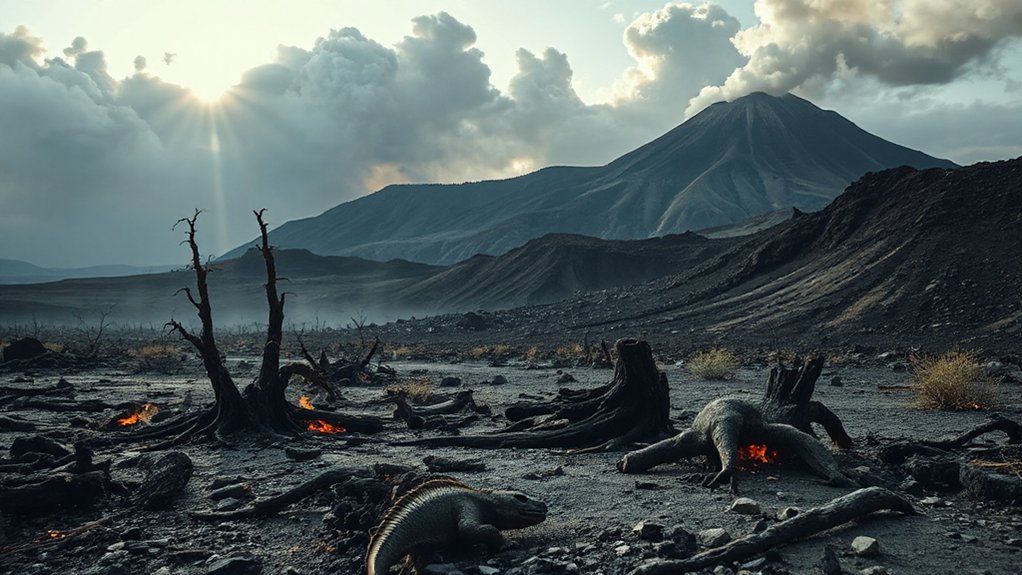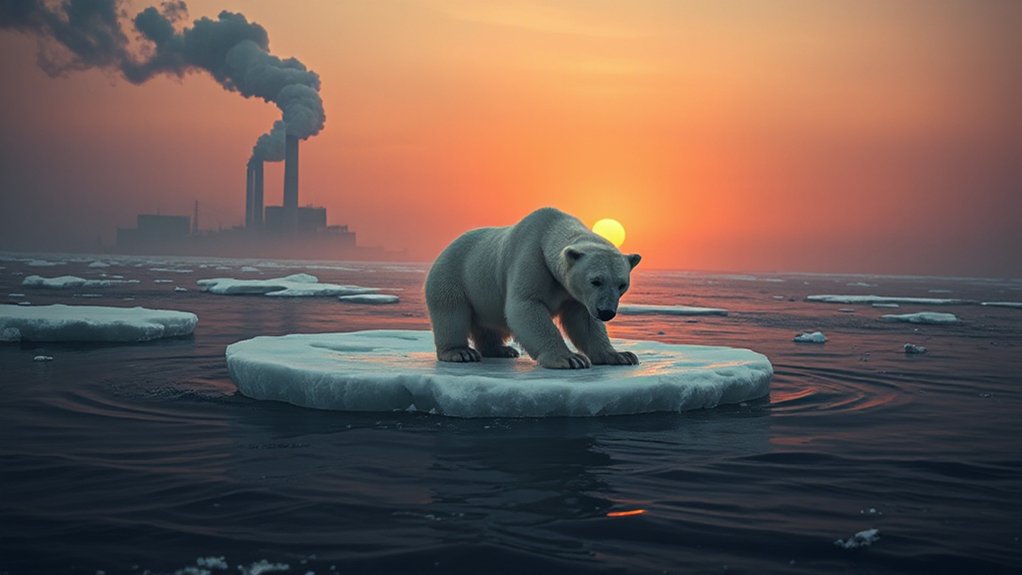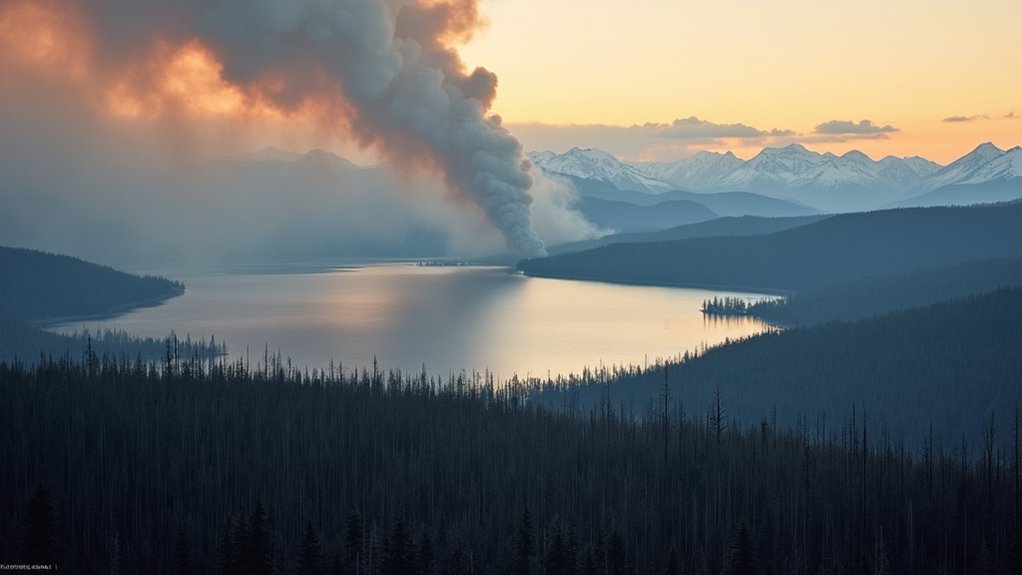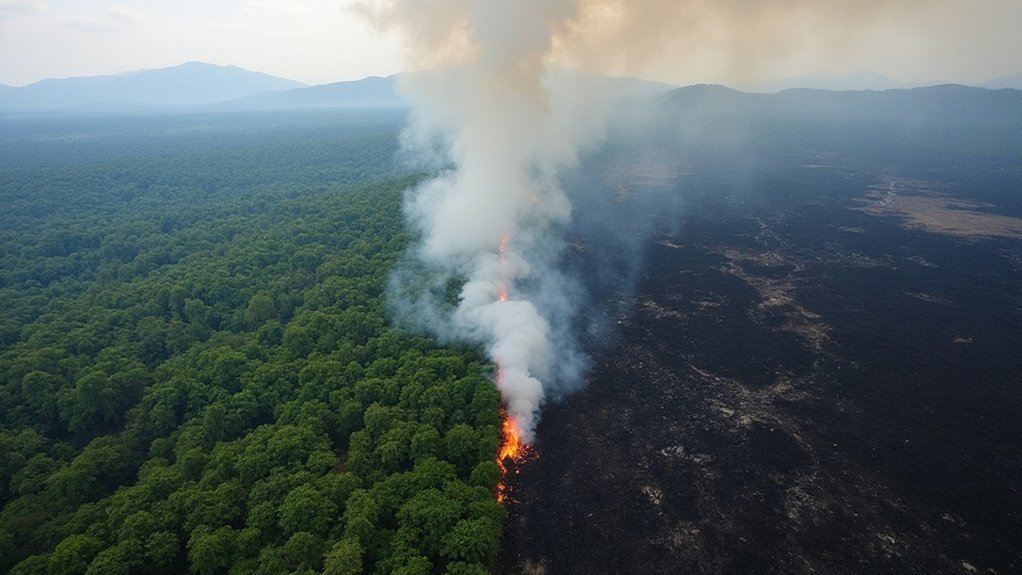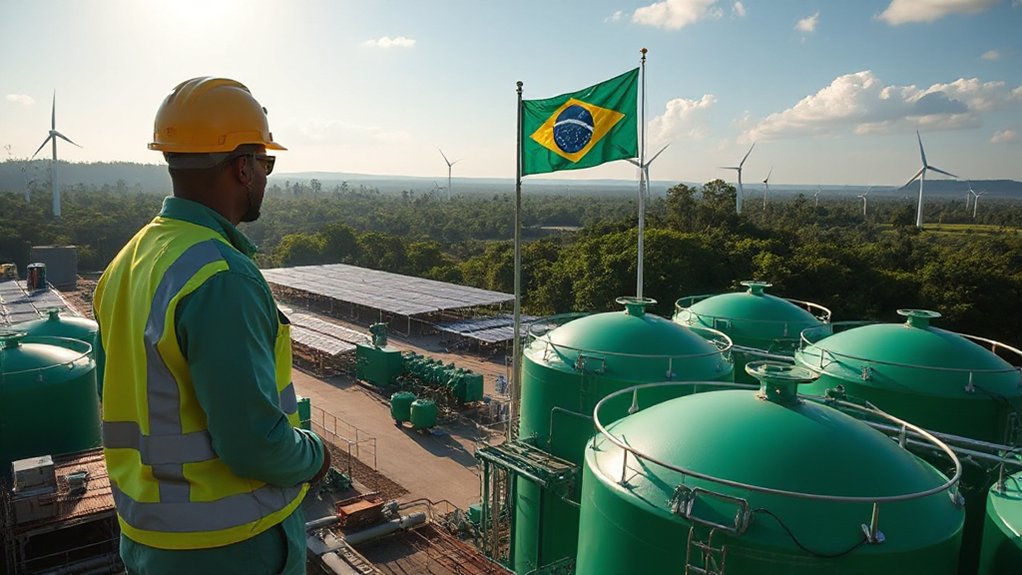Devastation swept across ancient Pangaea in ways modern humans can barely imagine. The evidence is literally burned into the geological record. Scientists have unearthed fossil charcoal in Lower Triassic strata, the smoking gun of ancient infernos that raged after the greatest mass extinction our planet has ever witnessed. These weren’t just little campfires. They were ecosystem-transforming events.
The charcoal fragments tell quite a story. Found mainly in sandstone layers above the Permian-Triassic boundary, they reveal the combustion of vegetation types that existed when dinosaurs were barely a twinkle in evolution’s eye. Paleoxylological analysis—fancy talk for studying fossil wood—confirms these weren’t just random carbon deposits. They were the aftermath of genuine wildfires.
Turns out, these blazes were heavily influenced by oxygen levels. No oxygen, no fire. Simple chemistry. The Early Triassic had these “fire windows” when oxygen concentrations were just right for a good burn. Fires simply cannot propagate when oxygen levels drop below 16% p(O2). Sometimes oxygen dropped below the combustion threshold, creating gaps in the charcoal record. Mother Nature literally turning the fire switch on and off.
These fires weren’t just destructive—they were architects of their ecosystems. They selectively burned certain species, created ecological niches, and redistributed nutrients like a pyromaniacal gardener. The charred remains of gymnosperm wood suggest some plants were already adapting to fire. Evolution’s always one step ahead, isn’t it? Researchers Wan, Ming Li and colleagues documented these ancient fossil charcoals in the Bogda Mountains of northwestern China as evidence of Early Triassic wildfire activity.
Most evidence comes from northeastern Pangaea, particularly China’s Bogda Mountains. The charcoal appears in fluvial deposits alongside plant fossils. Lightning, proven by fossil fulgurites, provided the spark. Climate set the stage through vegetation growth, but oxygen levels pulled the strings.
For millions of years, these fires repeatedly scorched the landscape. They weren’t just random events but key players in Earth’s recovery after near-total ecological collapse. The planet literally burned its way into a new era.
References
- https://par.nsf.gov/servlets/purl/10285224
- https://pmc.ncbi.nlm.nih.gov/articles/PMC4585212/
- https://mst.elsevierpure.com/en/publications/wildfires-in-the-early-triassic-of-northeastern-pangaea-evidence-
- https://papers.ssrn.com/sol3/papers.cfm?abstract_id=5641459
- https://www.geochemicalperspectivesletters.org/article2532/
